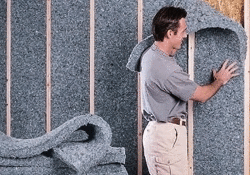OFFICE INTERIORS FLOORING UNDERLAYS

Flooring Underlays While buying a laminate, wood, or vinyl floor, you might think whether flooring underlays need to be bought for your floors and if so, what type of underlay? Generally, underlays should always be used in floor installation but with some exceptions. For example, underlay is not needed when fitting a cushioned vinyl floor providing a soft surface. Most wood and laminate floors are known as 'floating' floors meaning that they are not fixed down permanently to the ground below. These types of floors require underlay below them, for the purpose of sound-proofing and to prevent vapour from entering the flooring. Depending on the type of floor you want to buy and the place you plan to install it, many choices for underlay are available for suiting your needs. Sub-Floor Types The underlay type you need will be dependent on the sub-floor that your new flooring will be fitted on top of. The sub-floor is usually either a wooden floor base or a concrete base. For a concrete sub-floor you'll usually need an underlay with a moisture barrier, a separate barrier, or a built-in DPM (Damp Proof Membrane) installed. This is for ensuring that your flooring is protected from getting ruined by damp. However for wooden flooring, the job will be done by most underlays but the most suitable one will depend on the type of flooring you are laying, whether it is a solid wood, laminate, or cork floor. Laminate Flooring Underlays It is suitable to use most underlay products in a laminate floor installation, since laminate floors are usually fitted as a 'floating floor'. In this the fitting of flooring into place is done by clicking together without needing to glue the joints or glue it down. Solid Wood Flooring Underlays It is a little more difficult to install solid, or real wood flooring in comparison to fitting an engineered or laminate floor since wood flooring has to be glued down to the floor below it. Considering this, a professional floor fitter who will know which underlay to use may be consulted for installing your solid wood floor. But, if you are installing the wood floor yourself or buying the materials for somebody else to do it, the requirements of underlay are quite straight-forward. Basically you have to be sure that a pre-glued underlay is used and if it has to be installed onto a concrete sub-floor then built-in DPM has to be used with a pre-glued underlay. Engineered Flooring Underlays Engineered flooring is similar to laminate floors and its installation is usually as a floating floor. It is joined together without gluing to the sub-floor. Like laminate flooring it is fine to install most underlay products with engineered flooring, but for a concrete sub-floor a moisture barrier is needed, otherwise a separate barrier will need to be fitted additionally to the flooring underlays.